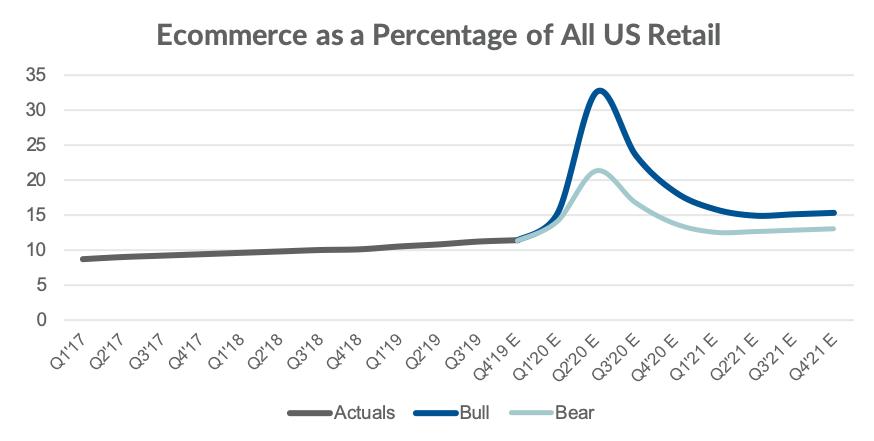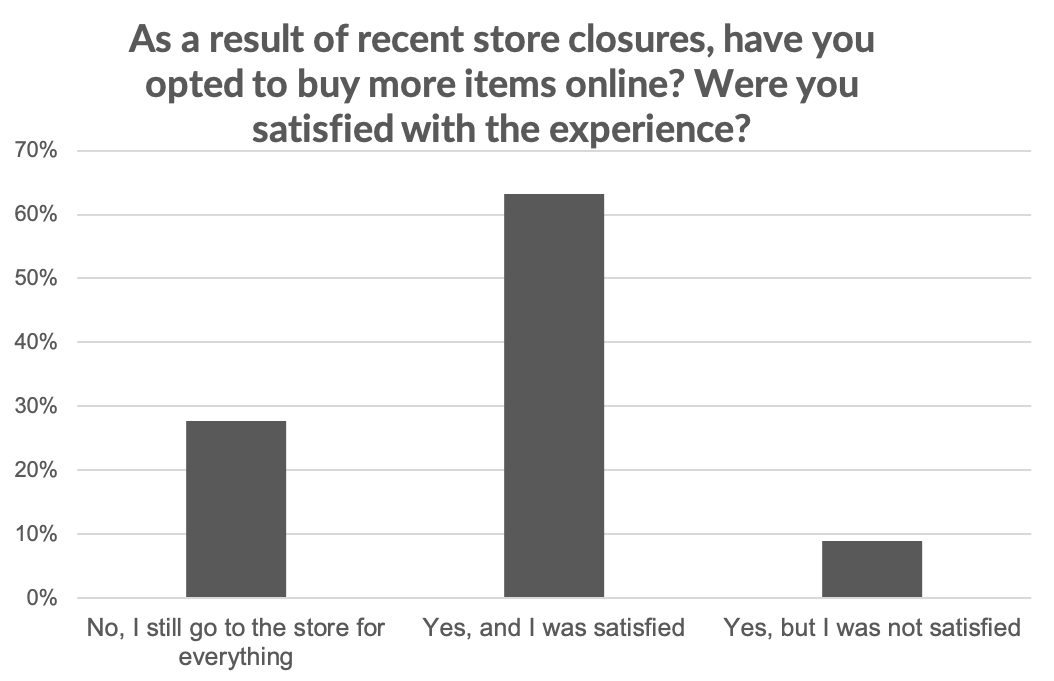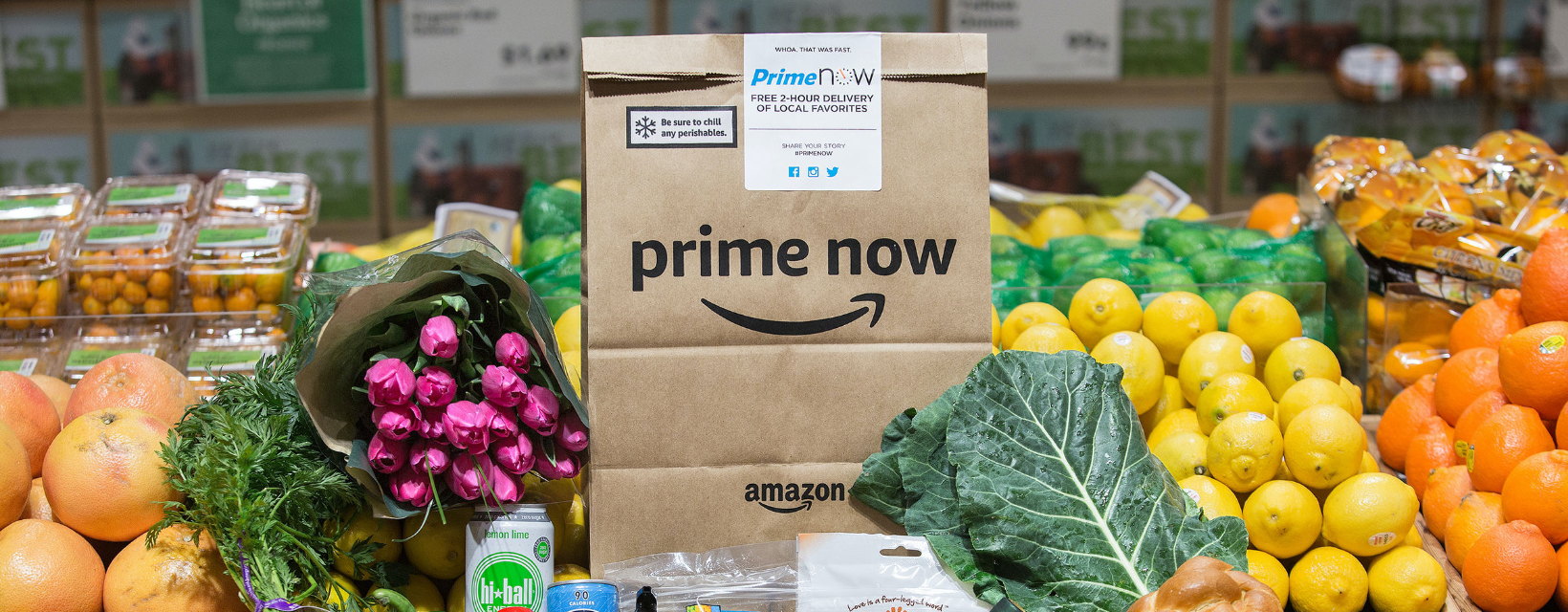In the wake of COVID-19, consumers around the globe have been forced to change their buying habits.
For many, ecommerce has become the preferred—or only—way to buy goods, a change that will likely accelerate the adoption of ecommerce by 2-3 years.
As a framework for evaluating change, we use the following categories: temporary changes, more permanent cultural shifts, and accelerated changes. In our view, growth in ecommerce as a percentage of overall retail sales is one example of a change that was already underway and will accelerate due to coronavirus and the related stay at home measures.
- Our survey of 245 US consumers suggests 72% of consumers are buying more online, driven by groceries and sales of other home staples.
- Ecommerce is nascent and growing slowly, at just 11.4% of all US retail in Q4 2019, up from 10.1% in Q4 2018.
- Q2 2020 will be very different for two reasons: 1. We estimate that overall retail sales (excluding gasoline) will be down 30% to 40% due to car dealership and other retail closures beginning in March; 2. Demand for ecommerce will be up as consumers stay home, avoid stores, but need groceries and other staples.
- Based on our survey and a category-by-category analysis of US retail sales, we expect ecommerce to represent as much as 32% of retail sales in Q2 2020.
People are using ecommerce in new ways during this shutdown, which will create new habits and accelerate the trend toward buying goods online. Online delivery of groceries and household goods under index overall ecommerce, leaving even more room for growth. We expect Amazon, Walmart, Target, Uber Eats, Doordash, Instacart, and others to see new and long-lasting demand for their ecommerce services.
The bull case vs. bear case for ecommerce
Ecommerce as a percentage of overall retail is a function of both overall retail sales and ecommerce usage. Overall retail sales will be negatively affected by retail store closures in March, April and beyond, particularly due to auto dealers closing and big box retailers closing in-store sales. Instead, the retailers that are staying open are asking customers to order online and pick up in-store. As a result ecommerce usage will be positively affected by increased demand for pickup and delivery, particularly groceries and other staples, as consumers avoid going to the store.
As we modeled overall retail sales for Q2 2020, even in an attempt to be generous, it’s challenging to envision anything more optimistic than a 30% to 40% decline. As a result, the denominator in question is meaningfully reduced when compared to a “normal” quarter for US retail sales.
The numerator, ecommerce sales, won’t see as dramatic of a decline. Some categories, like groceries and personal health products, may even see a lift. To be clear, we expect even ecommerce sales in Q2 2020 to be down q/q, but ecommerce sales as a percentage of overall retail sales will be up.
By how much will ecommerce benefit? And how much of that activity will stick?
Based on our survey and a category-by-category analysis of US retail sales, we expect ecommerce to represent as much as 32% of retail sales in Q2 2020. This number will decline sharply as car dealerships and other retailers open their doors again in Q3 and Q4, but we also expect some consumers to stick with ecommerce as their new preferred way to shop for groceries and other staples.

Our thesis is that ecommerce growth will continue somewhere between its pre-CVOID-19 growth trajectory and the new growth trajectory, the bull and bear cases outline above, as we return to “normal” in 2021. The changes we are seeing today will likely accelerate the adoption of ecommerce by 2-3 years.
COVID-19 ecommerce survey results
To test our hypothesis, we surveyed 245 US consumers about changes in their shopping habits. We found that 72% of consumers have opted to buy more online in light of recent store closures.

63% of respondents indicated that they are buying more online and that they were satisfied with the experience; 9% indicated that they are buying more online but were not satisfied.
An acceleration in ecommerce adoption is most likely to come from the group of consumers that are buying more online and were satisfied or 63% of all survey respondents. Ecommerce needs to be 10x better to change a habit like grocery shopping.
So, when stores re-open, will shoppers that were forced online flood back to the stores, or will some of their new habits stick? Our survey indicates that a majority of people will increase their online shopping going forward. 47% of respondents said they will return to buying most things in stores but plan on buying more online; an additional 13% said they plan on continuing to buy most things online.

We also asked what products consumers have tried purchasing online for the first time in the past month. Unsurprisingly, the most popular categories were home staples (paper towels, soap, and toilet paper), followed by groceries, then by cleaning supplies. Meal delivery underperformed vs. our expectations.

The trend in groceries is confirmed by a study cited by Axios, which shows that 41% of consumers are shopping online for groceries more than in previous months – an indication that heavy investment in fresh grocery delivery from Amazon, Walmart, Instacart, and others has been the right long-term play.
The shift to ecommerce is a slow, steady, undeniable truth
Even a 2 to 3-year acceleration in the shift to ecommerce leaves our long-term investment thesis in ecommerce intact. We continue to believe that over the next few decades, ecommerce will stabilize at around 55% of all retail sales, as we’ve outlined in our piece on the future of retail. This massive shift creates hundreds of billions in unrealized opportunity for innovative retailers and retail service providers alike, driving convenience for consumers, especially in times of need.
